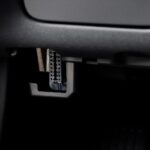Choosing the right OBD2 scanner can be a daunting task, especially with the wide variety available on the market. This guide will help you understand the different types of OBD2 scanners, their capabilities, and how to choose the best one for your needs. We’ll focus on consumer-grade devices, leaving aside professional tools that require specialized training and often cost thousands of dollars.
Types of OBD2 Scanners
Broadly speaking, OBD2 scanners fall into two categories:
1. OBD2 Adapters
These are simple devices that lack a built-in display. They connect to your smartphone or laptop via Bluetooth (most common) or a cable. To use an adapter, you’ll need to download compatible software onto your device, usually recommended by the manufacturer. Adapters are generally smaller and more portable than standalone scanners.
2. Standalone OBD2 Scanners
These are self-contained units with their own screen and software. They allow you to perform diagnostics without needing a separate device. While convenient, standalone scanners can be bulky and their screens are often small and monochrome. The shorter cable length can also make it challenging to monitor parameters while driving.
OBD2 Scanner Capabilities
Regardless of the type, OBD2 scanners vary in their capabilities. Some only read information from the engine control unit (ECU), while others can diagnose brake systems, transmissions, and other electronic components. Unfortunately, packaging and online descriptions often lack these details. Reading user reviews before purchasing is highly recommended to understand the specific functionalities of each scanner.
Understanding OBD2 Scanner Results
Even the most advanced OBD2 scanners don’t always pinpoint the exact source of a problem. Instead of telling you precisely why your engine is idling rough, the scanner might indicate the system where the fault lies (e.g., the fuel system) or report a generic error code related to a component like the oxygen sensor. You’ll then need to decipher the code and diagnose the root cause yourself.
One common function of OBD2 scanners is resetting error codes. While any scanner can clear codes from the vehicle’s memory, the error will likely reappear if the underlying issue isn’t fixed.
Conclusion
Choosing the “best” OBD2 scanner depends on your individual needs and budget. If portability and basic diagnostics are your priorities, an adapter paired with a smartphone app might suffice. If you prefer a self-contained unit and don’t mind a smaller screen, a standalone scanner is a good option. Regardless of your choice, remember that an OBD2 scanner is a diagnostic tool, not a magic bullet. It provides valuable information, but you’ll still need some automotive knowledge to interpret the results and fix the problem.


